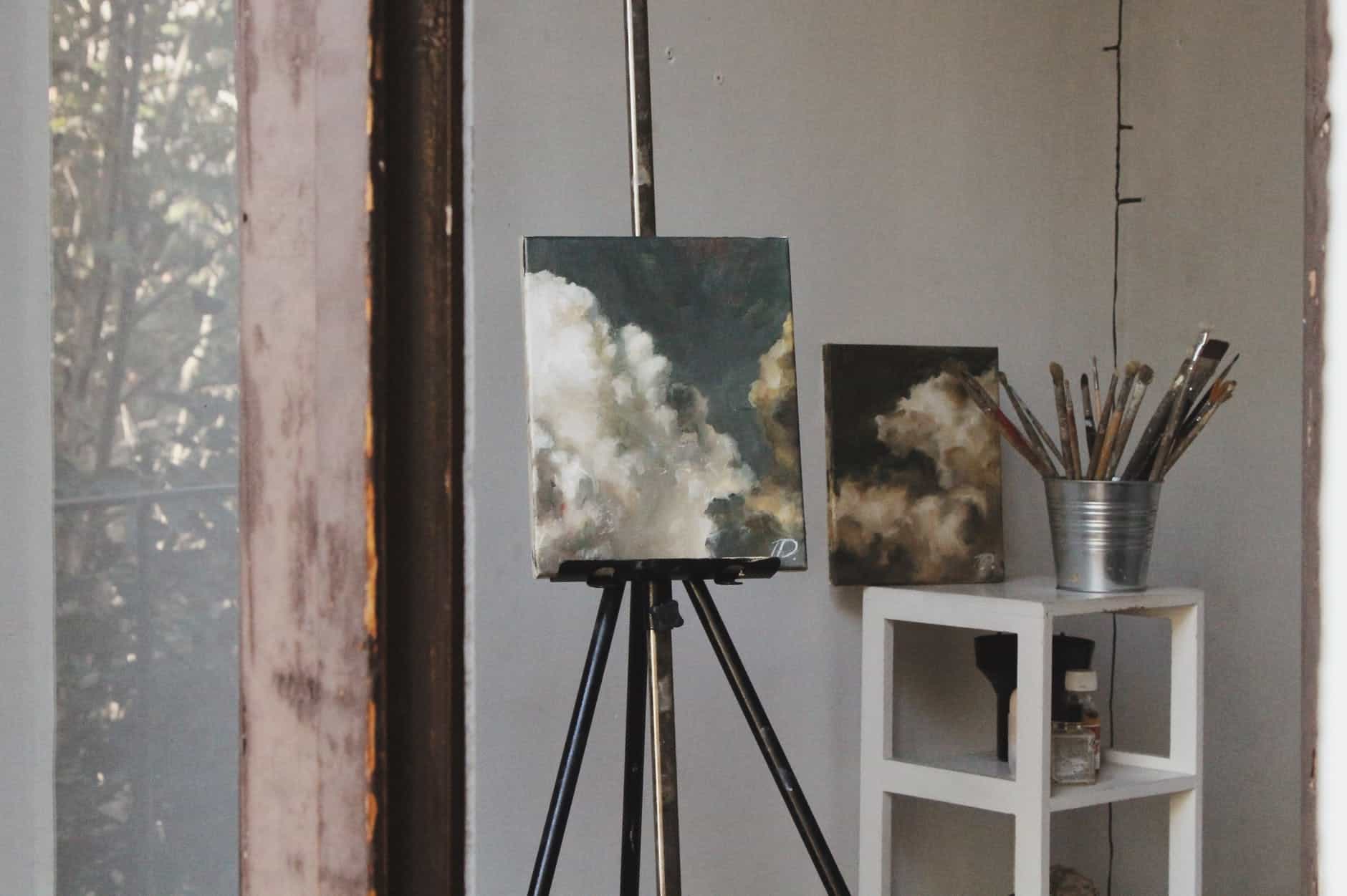Oil paintings are some of the most revered masterpieces in the art world. When most people think of art, they conjure images of oils paintings created by Raphael, Vincent Van Gogh, Pablo Picasso, and Leonardo DaVinci. People are drawn to oil paintings because of the complex colour pigmentations, the unique visions they inspire, and the emotions they evoke when looked upon. Many oil paintings have survived over the centuries and been through several restorations without losing their beauty or vibrancy.
While creating my own oil paintings, I noticed that some parts of it had this unpleasant shine to it, while other parts look fine. So, how is it that some parts of the oil paintings become shiny?
Why Are Parts Of My Oil Painting Shiny?
There are several reasons that may contribute to the shiny parts of an oil painting. One of the most common reasons is due to sinking, which occurs when the distribution of oils in the paint are uneven.
Having patchy areas where the painting is shiny by comparison, could be determined by a number of factors depending on layer thickness, solvents used, and even the brand of oil paint or colour.
There are a variety of methods used to control the sheen of a painting, and it always goes back to the very beginning of a piece.
Consider how your painting canvas was prepped. Incorrect preparation of the surface of the canvas or material that is being painted on may absorb some of the excess oils. Another possibility may be low-quality oil paints. It is important to use high-quality oil paints for the canvas on which you create your painting.
Let’s look at a more detailed analysis of these possible causes to identity the main cause why parts of my oil painting is shiny.
Sinking
What is sinking, and why does it happen?
Depending on the layers, solvents, and paints used, a painting could dry matte despite having a couple of shiny areas. This process is typically called sinking.
It happens when the paint on the top layer sinks into the bottom of the painting, giving it a dull appearance. The bottom layers become oil absorbent and pull the oils to the underlying layers.
This is typically caused by painting straight onto an unsealed surface, using cheap primers, too much thinner or spreading a layer too thin, or too much solvents when the oil paint is mixed.
Start From The Ground Up
The ground is a layer that separates oil paints from the support, acting as a barrier. If the support used is a panel, the ground is usually made of gesso. If the support is canvas, the ground will usually be made of underlying paint layers. There are three types of ground used in oil painting: acrylic, aqueous-based gesso, and oil-based ground.
The importance of choosing the right ground will greatly affect the outcome of whether a painting is glossy or matte. Some grounds absorb oils more than others.
When these grounds absorb the oil, it creates a more matte or dull finish. Less absorbent grounds will leave more of the oil on the surface and give a glossier sheen. Painting on top of these layers will continue to affect the oil content of the paint and control the outcome of the sheen.
Not All Paints Are Equal
Make sure to choose the right kind of paint for the desired finish. Some brands will contain varying amounts of oil and binding oil in the paint tube contents. The oil content of the paint can easily be determined by looking at the paint when it comes out of the tube.
Being mindful of the colours selected for the painting and the content will be detrimental to the outcome of the painting. Solvents will also impact shine. For example, natural resins and stand oil will include more gloss than linseed, while solvents and beeswax will create a more matte finish.
Stay Faithful To The “Fat Over Lean’ Rule
Painting fat over lean will help prevent sinking in. Starting with less oily colours will go a long way to ensuring an even finish. As the paints get layered on the canvas, the solvents should decrease while the oil content increases, finally finishing with paint straight from the tube. Thicker layers will also help keep the gloss on top. When needing a thin layer over a thick layer, such as adding a glaze, using an oil-based medium can help make it “fatter” and subsequently stay on the surface instead of being absorbed underneath.
When In Doubt, Oil It Out
In the event that the pigments do leave a sinking effect resulting in dry patches, it is possible to oil it out. Give the painting at least six months to dry thoroughly. If there are still patches you wish to correct, add a small amount of linseed oil onto a dry, clean, soft cloth. Apply the linseed oil onto the dull areas using soft strokes, and then let it dry for a few days. Keep repeating the process until the dry patch is gone.
However, if the goal is to have a matte or satin finish, this can easily be rectified and evened out with a varnish or beeswax.
Final Thoughts
Between sinking, proper canvas preparation, high-quality oil paints, and consistently following the oil painting guidelines, minimising shiny parts on my oil painting should be minimised.
I now also know how to correct the issues with my current paintings. It is important to remember that no masterpiece absolutely has to be glossy, but by being intentional and consistent with layering, solvents, oil content and oil paint quality, one can drastically improve the quality of the final product.
Slow and steady wins the race here, don’t rush perfection!

